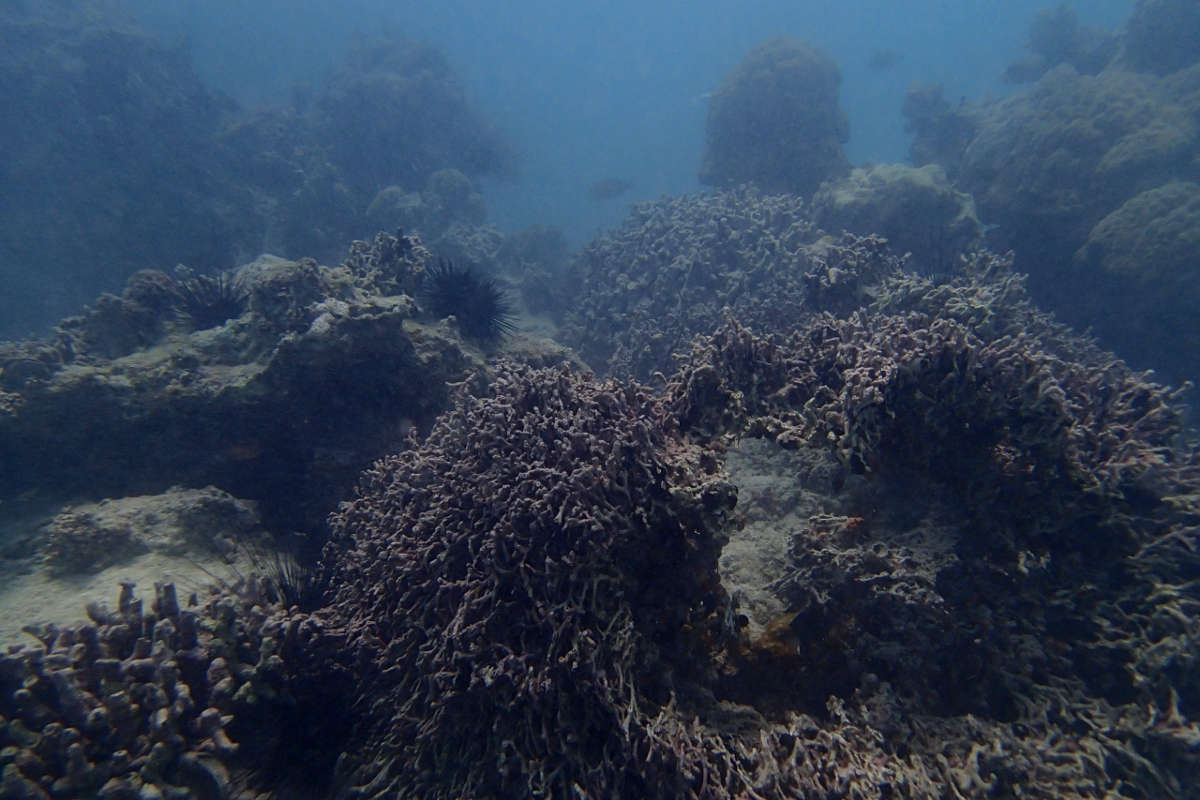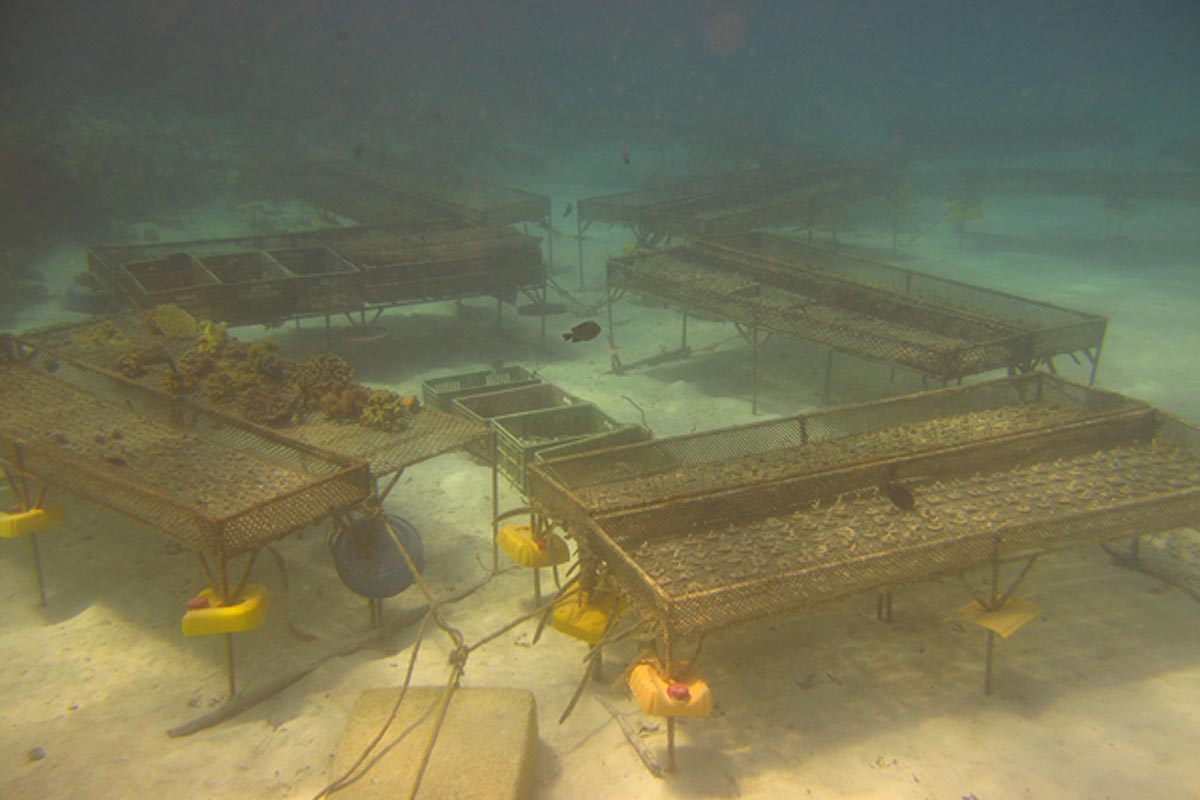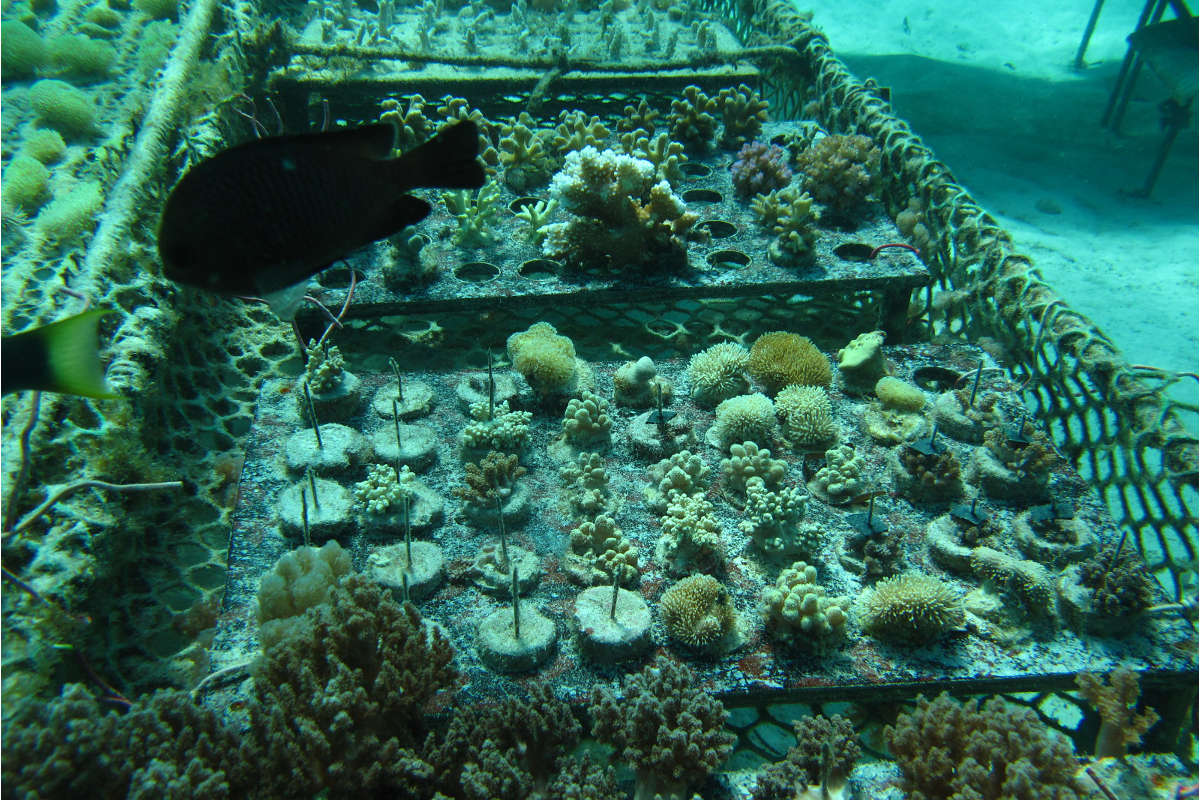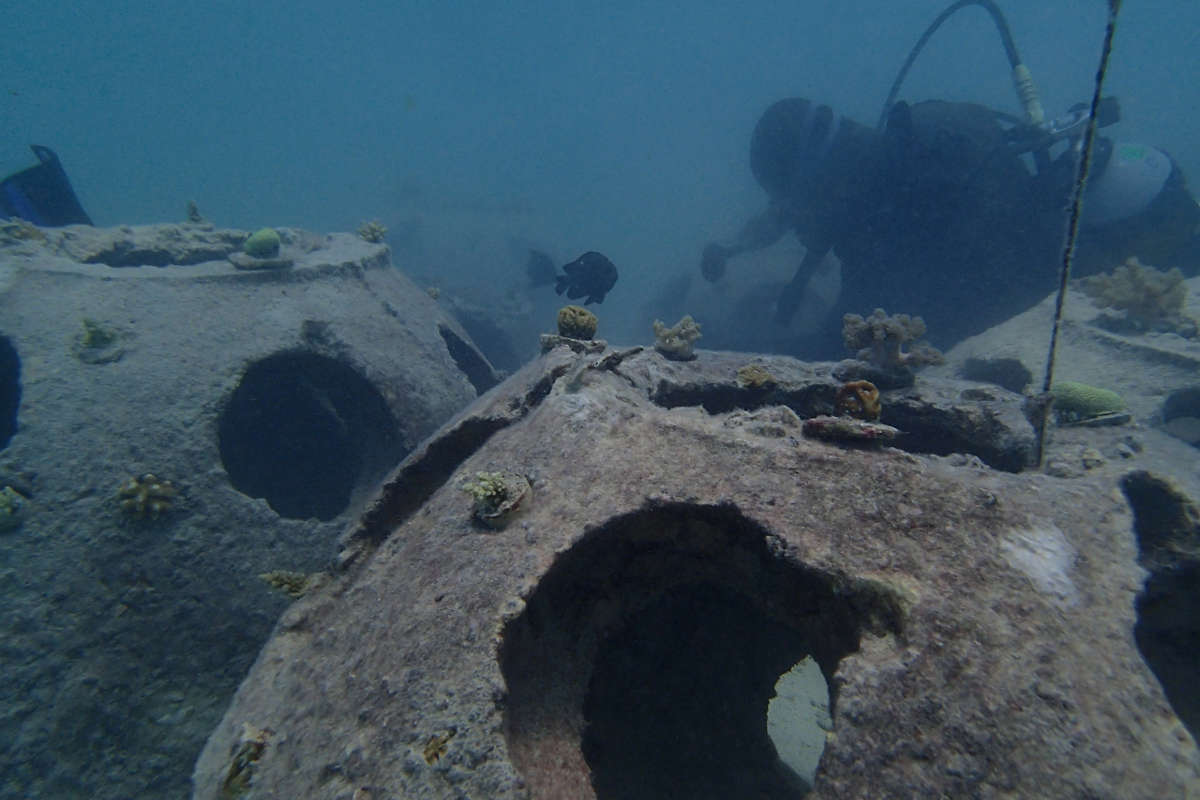Reforestation of coral reefs
Coral reefs around the world are shrinking and under massive pressure. Climate change and rising water temperatures are causing corals to bleach and die. Pollution and illegal fishing practices such as dynamite fishing cause additional damage to the reefs.
In 2016, El Niño caused the worst damage ever to the Great Barrier Reef: over 90 percent of the coral was bleached. Zanzibar was not spared either; half of the corals near the coast and a large part of the corals in our coral farm were destroyed.
We have therefore decided to rebuild our coral farm on the east coast of Zanzibar and use it to reforest damaged reefs. We cultivate corals that show more resistance to high temperatures and introduce them to damaged reefs to support their recovery.
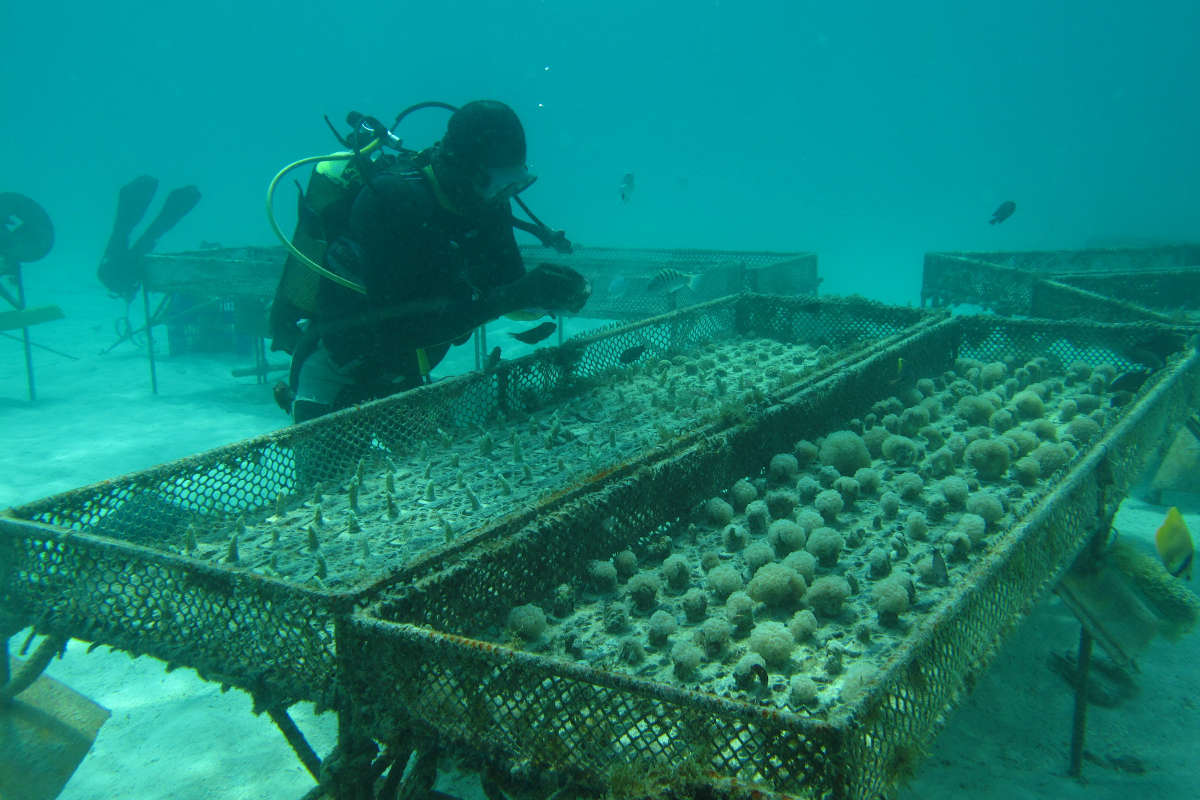
What we do
We believe that protecting, conserving and investing in education/sensitization are essential but may not be enough. Local know-how is needed for the cultivation of corals and the re-cultivation of damaged reefs. We want to gradually expand our activities into a recognized competence centre for the re-cultivation of coral reefs in the region of the West Indies (WIO).
Our house reef, which was massively damaged, is our prime patient. An artificial reef balls-based reef is an interesting test ground. We prefer to select and cultivate corals which have proved to be resistant to higher temperatures. However, to be better prepared for future El-Ninos, we are developing an additional test farm structure at the outer reef since 2017, where the water is cooler.
Our coral cultivation team tries to achieve the greatest possible biodiversity in the reforestation process. We largely follow the Reforestation Guidelines of Coral Restoration Consortium (CRC) and especially Baums et al. 2019. Unfortunately we don't have the capacity yet to monitor scientifically biometrics.
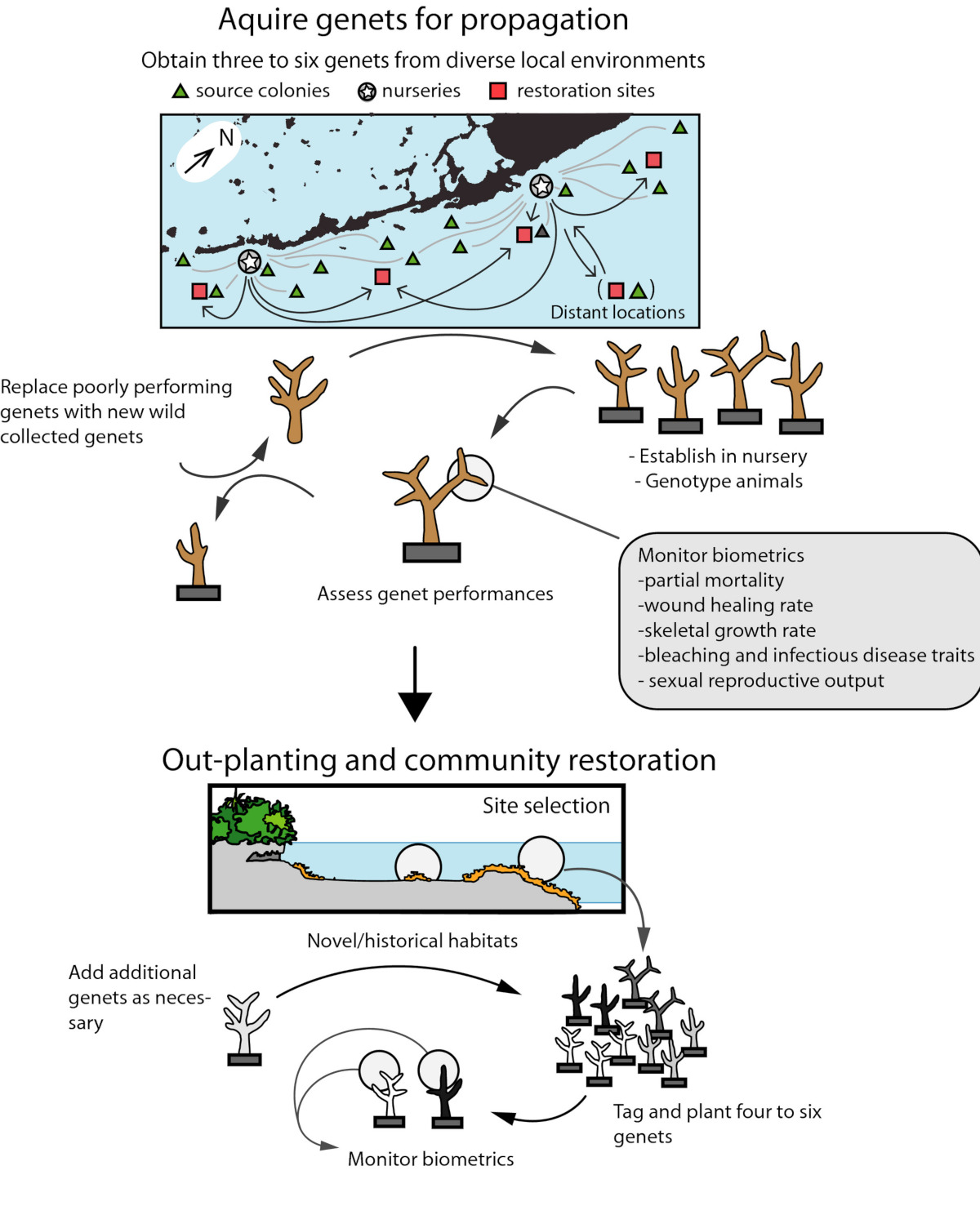
Additional Information
